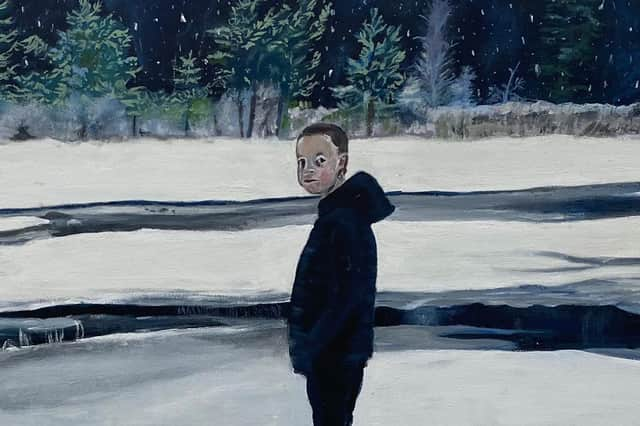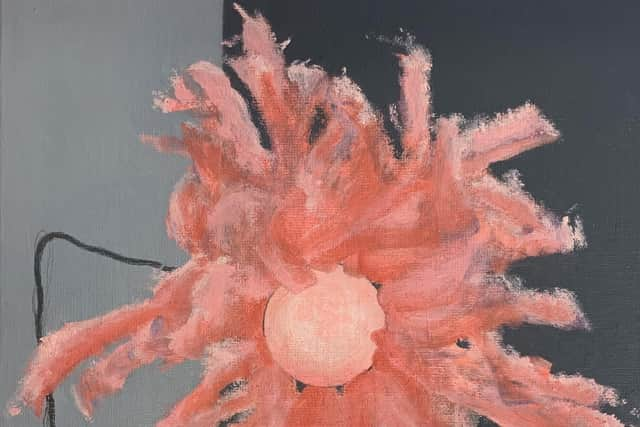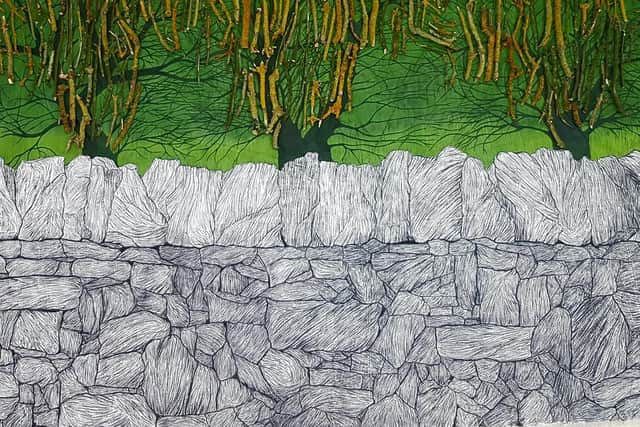Art review: Onwards - Gray's School of Art Digital Degree Show


Onwards: Gray’s School of Art Digital Degree Show, Gray’s School of Art, Aberdeen ****
If last year’s graduating art students had a rough deal, with lockdown ruining their final term and forcing degree shows online, arguably this year’s have had it even rougher. The pandemic has meant severe restrictions on access to studios and equipment for most of the year, and, once again, degree shows are digital.
Advertisement
Hide AdSome are served better than others by the digital platform, and this year Gray’s has built in more flexibility, offering visitors the option of 3D video-game style navigation or a more straightforward archival format. Perhaps unsurprisingly, among the 53 students in Fine Art disciplines, mass extinction and mortality are recurring themes, but there is also a welcome strand of absurdity and humour.


In Contemporary Art Practice – the umbrella discipline which now includes sculpture, print-making and electronic media – the big discovery of the year appears to have been digital drawing. It make sense, being away from the studio and working towards a digital degree show, but its prevalence suggests that some students are using it instead of physical media.
Some use it very well. Alexandra Laing creates a series of pithy works about life in the pandemic, influenced by cartoons and video games. The gags – about the number of people who claim to be from one household, the clown who thought it would be over soon, and FACTS (the world’s least memorable acronym) – might date quickly, but they hit the nail on the head at the moment, when humour is scarce and much appreciated.
Giulia Candela “clings to drawing like a lifeline.” Their body of work in digital drawing and painting is to do with finding the beauty in the mundane and exploring personal experience, and they have the kind of talent which will shine out whether working in pixels or pencils and paper.
Kelsey Leigh Grant’s work is about the almost obsessive impulse to preserve the likeness of a person who has been lost. She uses photographs of a lost loved one to create digitally cut stencils and then makes drawings which are powerful in their repetition. She also uses them to make a series of stamps which she sticks on sealed letters poignantly addressed to “Her, The After Life.”


Sculptor Hannah Fraser uses found cuddly toys to make hard-edged semi-abstract sculptures, then brings about a second transformation by painting them in funky playroom colours. Poppy Willox starts with inherited trinkets and transforms them using expanding foam into objects which look like bodily organs. Copper wire is added to create electric circuits, giving the impression of vitality.
Advertisement
Hide AdRachael Rutherford is concerned with the body, too, and with challenging the patriarchal ideas of Freud. Her textile sculptures of female organs are intimate and striking. Jordyn Rachel Gardner crochets using plant-based fibres to make soft, tender sculptures which ponder the connections between humans and animals in a fresh and surprising way.
In the Painting Department, there is a strong crop of students commited to mark-making media. John Hamilton is one of several inspired by sci-fi and speculative fiction and working with narratives to explore ideas. His animations, which combine various media and have a Terry Gilliam-like sensibility, are well worth seeing. There are stories implied in Hollie E Beattie’s mysterious paintings of winter scenes, and Jim Tripney draws on Bible stories for a strong series of paintings on the theme of hope.
Advertisement
Hide AdLewis Andrew Shaw presents a series of large paintings exploring the decline of the fishing industry in the Fife village of St Monans, from the weathered surface of the harbour wall to the weathered faces of former fishermen. Rita Kermack explores the “littoral zone” where land and sea meet in forensic detail through paintings and relief works made of flamed and corroded copper.
Everyday thrown-away objects make the subjects of strange and often beautiful paintings by Melanie Guatelli, drawing on her background in ecological sciences. Margaret Brown makes sculptures of plastiglomerates – geological artefacts of the anthropocene in which plastic waste becomes embedded with organic materials – which she then paints.
Erin Thomson is drawn to what she doesn’t understand, to riddles and codes, making artist’s books inspired by cunieform tablets and drawings which include coded elements of music. Aleksandra Caune, concerned with the pandemic and her daughter’s recent asthma diagnosis, has found a way to turn her own breath into art, working with graphite, charcoal and soapy water. Once again, art students prove they are capable of invention, even in the worst of circumstances.
Until 19 July, see www.graysdegree.show
A message from the Editor:
Thank you for reading this article. We're more reliant on your support than ever as the shift in consumer habits brought about by coronavirus impacts our advertisers.
If you haven't already, please consider supporting our trusted, fact-checked journalism by taking out a digital subscription at https://www.scotsman.com/subscriptions